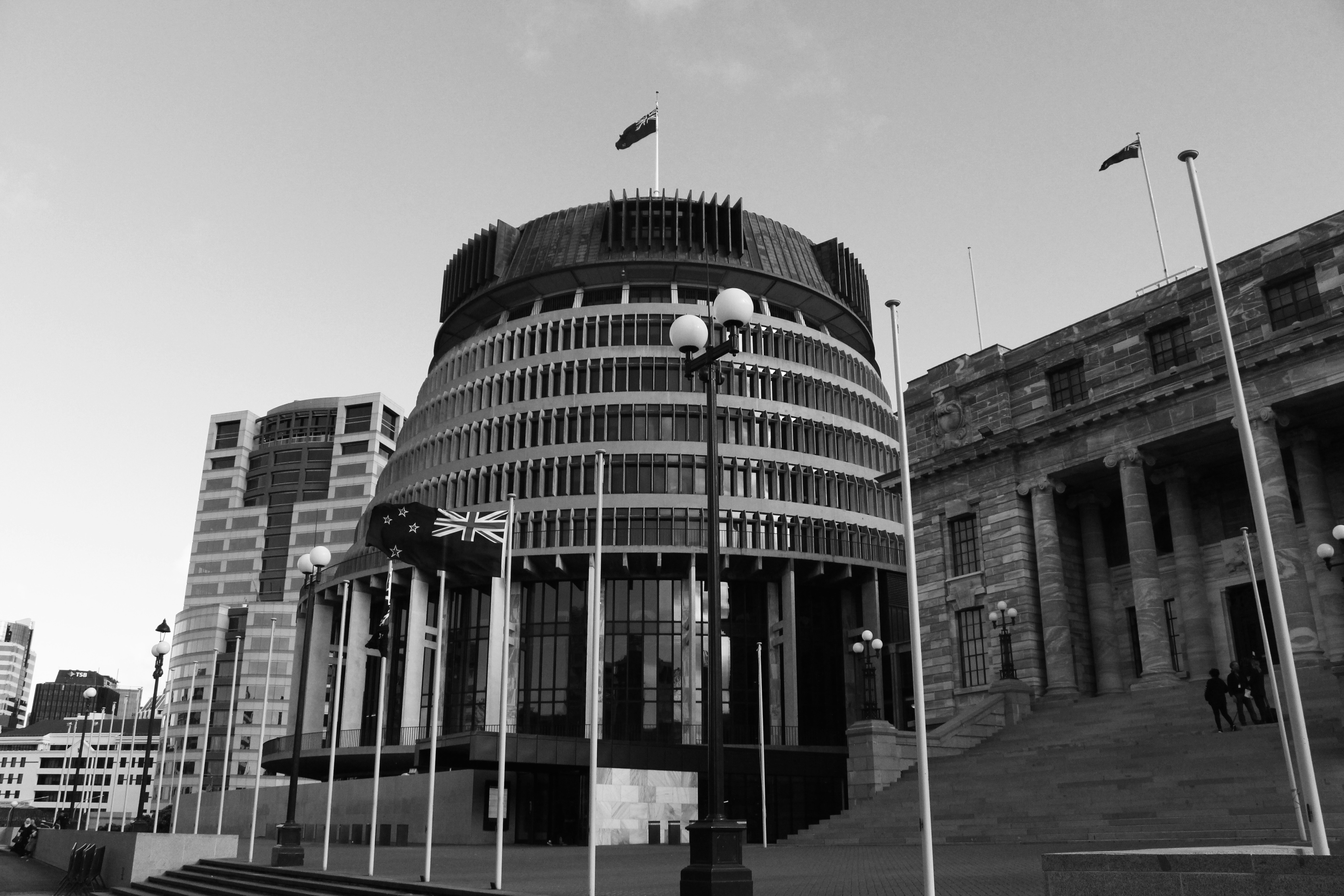Not just insurance, a pathway to whānau wellbeing
Ngāti Whātua Ōrākei’s nib-Toi Ora programme breaks barriers to healthcare by offering fully funded, culturally responsive insurance to whānau, creating $10 million in social value.
%20(1).jpg)

Better health enables better social outcomes
Better health enables better social outcomes
Facilitating choice in healthcare access
Ngāti Whātua Ōrākei’s goal is for whānau to live happy and healthy lives. Underpinning this goal is the desire for mana motuhake, the ability to choose and to be in control of one's circumstances. For generations, Ngāti Whātua Ōrākei has worked within the public system to advance the health circumstances of whānau, but found the results are wanting.
nib-Toi Ora disrupts this status quo. Through the nib-Toi Ora model, registered Ngāti Whātua Ōrakei hapū members are provided with fully funded universal health insurance, helping to remove healthcare barriers and enhance whānau hauora.
nib-Toi Ora is different to a typical health insurance model because:
- It is open to members of all ages (pēpē, tamariki, rangatahi, pakeke, and kuia/kaumātua)
- Includes automatic coverage for members’ pre-existing conditions
- Has no co-pay, reducing the financial burden for whānau
- The type of cover is expansive and includes:
- primary care (GP visits, prescriptions, dental, physiotherapy, glasses/contact lenses, rongoā Māori and more),
- specialist care (specialist and diagnostic not requiring hospitalisation), and
- cover for major surgical and medical (non-surgical) treatment in private hospitals
However, the magic of nib-Toi Ora is the integrated support that sits around the health insurance policy:
- Navigation and Outreach: help for whānau to be aware of and engage with the programme, for example through events
- Quality Provision: help for providers to improve the quality and cultural competency of their services
- Health Management Programmes and Services: specialist programmes for areas of focus for the hapu such as diabetes management
Our SROI analysis found that access to healthcare facilitated by nib-Toi Ora leads to not only improved clinical outcomes but also positively social impacts for broader whānau wellbeing.
Better health enables better social outcomes

ImpactLab estimates around ten million dollars of social value is created through nib-Toi Ora through support to over 5,300 people.
This value is driven by twelve key outcomes we could value with public data:
Our analysis found that nib-Toi Ora delivers improved outcomes for whānau compared to those relying solely on the public system, because it specifically targets the barriers that whānau Māori face in accessing quality and timely healthcare.
For example, our analysis of the pēpē, tamariki, and rangatahi cohorts highlighted the impact of nib-Toi Ora on the oral health of these younger populations. Despite these cohorts’ eligibility for free dental care, dental care claims were among the top five most claimed categories, indicating that nib-Toi Ora has helped whānau to access essential dental services that may otherwise be out of reach or unavailable due to limited services available through the free dental scheme or negative experiences with existing providers.
Insights
For the policymakers:
Bringing Data Together

Social and health data has often been collected and analysed separately, even though we recognise hauora as a multidimensional concept. While many providers serve whānau in a holistic manner, data collection often continues to occur in silos. A notable aspect of this analysis was bringing together datasets—combining data from nib, Ngāti Whātua Ōrākei, and a Primary Healthcare Organisation—to create as comprehensive a picture as possible of whānau and their engagement with nib-Toi Ora.
We should consider:
What tools and systems are available to providers, and are they fit for purpose? Are there opportunities to capture more holistic data or link existing datasets?
For the analysts:
Quality over quantity
In our work with nib and Ngāti Whātua Ōrākei, we came across a challenge we see often among teams delivering services and programmes – collecting lots of data, but often finding that it’s not as relevant or high-quality as expected. It’s a reminder that when it comes to data, more isn’t always better—especially if it doesn’t align with your organisation’s specific goals.
Different programmes require different data points—what’s critical for one might not matter for another. Navigating this can be tricky, but it’s crucial to ensure your team can demonstrate meaningful outcomes data for your specific programme. This is especially important when we consider that producing reliable outcomes data is often a long game.
So, how do we get it right? It starts with alignment. Take a moment to review your strategic goals alongside the data you’re collecting. Are they aligned? Are you focusing on collecting the data that is meaningful in the context of your mahi? And, just as important—are you confident in the accuracy of your data?
By asking these questions, we can shift the focus from merely collecting more data to collecting the right data.
For the frontline workers:
Closing the Loop
We often find that data entered by frontline workers is rarely looped back to them, despite the valuable insights data holds about who they serve and how individuals may (or may not) be engaging with the programme.
Simple analyses of engagement data already captured by nib-Toi Ora sparked a range of important questions: Who is and isn’t engaging with nib-Toi Ora? What do these individuals have in common? What shared barriers might they be facing to engage? And how can nib and Ngāti Whātua Ōrākei better support their engagement?
Effectively using your data allows frontline teams to ask critical questions, helping to ensure your programme continuously improves and meets the needs of those it serves.
Facilitating choice in healthcare access
Ngāti Whātua Ōrākei’s goal is for whānau to live happy and healthy lives. Underpinning this goal is the desire for mana motuhake, the ability to choose and to be in control of one's circumstances. For generations, Ngāti Whātua Ōrākei has worked within the public system to advance the health circumstances of whānau, but found the results are wanting.
nib-Toi Ora disrupts this status quo. Through the nib-Toi Ora model, registered Ngāti Whātua Ōrakei hapū members are provided with fully funded universal health insurance, helping to remove healthcare barriers and enhance whānau hauora.
nib-Toi Ora is different to a typical health insurance model because:
- It is open to members of all ages (pēpē, tamariki, rangatahi, pakeke, and kuia/kaumātua)
- Includes automatic coverage for members’ pre-existing conditions
- Has no co-pay, reducing the financial burden for whānau
- The type of cover is expansive and includes:
- primary care (GP visits, prescriptions, dental, physiotherapy, glasses/contact lenses, rongoā Māori and more),
- specialist care (specialist and diagnostic not requiring hospitalisation), and
- cover for major surgical and medical (non-surgical) treatment in private hospitals
However, the magic of nib-Toi Ora is the integrated support that sits around the health insurance policy:
- Navigation and Outreach: help for whānau to be aware of and engage with the programme, for example through events
- Quality Provision: help for providers to improve the quality and cultural competency of their services
- Health Management Programmes and Services: specialist programmes for areas of focus for the hapu such as diabetes management
Our SROI analysis found that access to healthcare facilitated by nib-Toi Ora leads to not only improved clinical outcomes but also positively social impacts for broader whānau wellbeing.
Better health enables better social outcomes

ImpactLab estimates around ten million dollars of social value is created through nib-Toi Ora through support to over 5,300 people.
This value is driven by twelve key outcomes we could value with public data:
Our analysis found that nib-Toi Ora delivers improved outcomes for whānau compared to those relying solely on the public system, because it specifically targets the barriers that whānau Māori face in accessing quality and timely healthcare.
For example, our analysis of the pēpē, tamariki, and rangatahi cohorts highlighted the impact of nib-Toi Ora on the oral health of these younger populations. Despite these cohorts’ eligibility for free dental care, dental care claims were among the top five most claimed categories, indicating that nib-Toi Ora has helped whānau to access essential dental services that may otherwise be out of reach or unavailable due to limited services available through the free dental scheme or negative experiences with existing providers.
Insights
For the policymakers:
Bringing Data Together

Social and health data has often been collected and analysed separately, even though we recognise hauora as a multidimensional concept. While many providers serve whānau in a holistic manner, data collection often continues to occur in silos. A notable aspect of this analysis was bringing together datasets—combining data from nib, Ngāti Whātua Ōrākei, and a Primary Healthcare Organisation—to create as comprehensive a picture as possible of whānau and their engagement with nib-Toi Ora.
We should consider:
What tools and systems are available to providers, and are they fit for purpose? Are there opportunities to capture more holistic data or link existing datasets?
For the analysts:
Quality over quantity
In our work with nib and Ngāti Whātua Ōrākei, we came across a challenge we see often among teams delivering services and programmes – collecting lots of data, but often finding that it’s not as relevant or high-quality as expected. It’s a reminder that when it comes to data, more isn’t always better—especially if it doesn’t align with your organisation’s specific goals.
Different programmes require different data points—what’s critical for one might not matter for another. Navigating this can be tricky, but it’s crucial to ensure your team can demonstrate meaningful outcomes data for your specific programme. This is especially important when we consider that producing reliable outcomes data is often a long game.
So, how do we get it right? It starts with alignment. Take a moment to review your strategic goals alongside the data you’re collecting. Are they aligned? Are you focusing on collecting the data that is meaningful in the context of your mahi? And, just as important—are you confident in the accuracy of your data?
By asking these questions, we can shift the focus from merely collecting more data to collecting the right data.
For the frontline workers:
Closing the Loop
We often find that data entered by frontline workers is rarely looped back to them, despite the valuable insights data holds about who they serve and how individuals may (or may not) be engaging with the programme.
Simple analyses of engagement data already captured by nib-Toi Ora sparked a range of important questions: Who is and isn’t engaging with nib-Toi Ora? What do these individuals have in common? What shared barriers might they be facing to engage? And how can nib and Ngāti Whātua Ōrākei better support their engagement?
Effectively using your data allows frontline teams to ask critical questions, helping to ensure your programme continuously improves and meets the needs of those it serves.

The Social Investment Agency: What we know so far
With SIA’s second funding pathway EOI now closed, we unpack what the Social Investment Agency is, what it aims to do, and what these changes mean for providers in the social sector, kicking off our new series on SIA and outcomes-based funding.

Part 2- Understanding the Intervention Logic
Part 2 of this series, unpacks the Intervention Logic, outlining how it differs from a Theory of Change and the role it plays in mapping programmes, evaluating outcomes, and supporting clear communication with stakeholders.

Part 1- Understanding the Theory of Change
In the first article in this two-part series we introduce the Theory of Change, a flexible framework that maps how services create impact. It explains its purpose, benefits, and why it’s a powerful tool for guiding, testing, and communicating change.

Why measuring social impact matters to funders and housing providers
Measuring social impact in housing helps funders and providers target services to residents’ real needs, improve wellbeing, reduce costs, and guide smarter decisions across the housing lifecycle with stronger outcomes for people and communities.
Get in touch
We help impact organisations know, show and grow their social impact. Let’s work together to do good, better!



